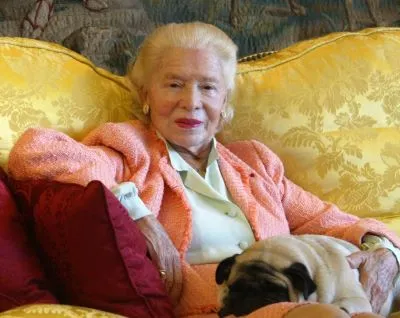
Marie-Louise Carven is a name that resonates with elegance, grace, and revolutionary changes in the fashion world. Known for her ability to create sophisticated yet wearable pieces, Carven remains an iconic figure in fashion history. From her humble beginnings to her rise as a leading designer, Marie-Louise Carven’s work continues to influence and inspire designers today. Let’s take a deep dive into her life, her impact, and why she remains relevant in the world of fashion.
Table of Contents
Early Life and Education
Marie-Louise Carven was born in 1909 in Paris, France, into a middle-class family. Growing up in the heart of Paris, she was exposed to art, culture, and fashion at an early age. Her early interest in design was nurtured when she decided to study fashion at the prestigious École de la Chambre Syndicale de la Couture Parisienne. This institution is where many famous designers, including Christian Dior, honed their skills.
Marie-Louise Carven’s education in fashion laid the foundation for what would become a lifelong dedication to creating refined yet accessible clothing for women. Her style was always rooted in simplicity, and she drew inspiration from the world around her—urban life, nature, and the art that flourished in Paris.
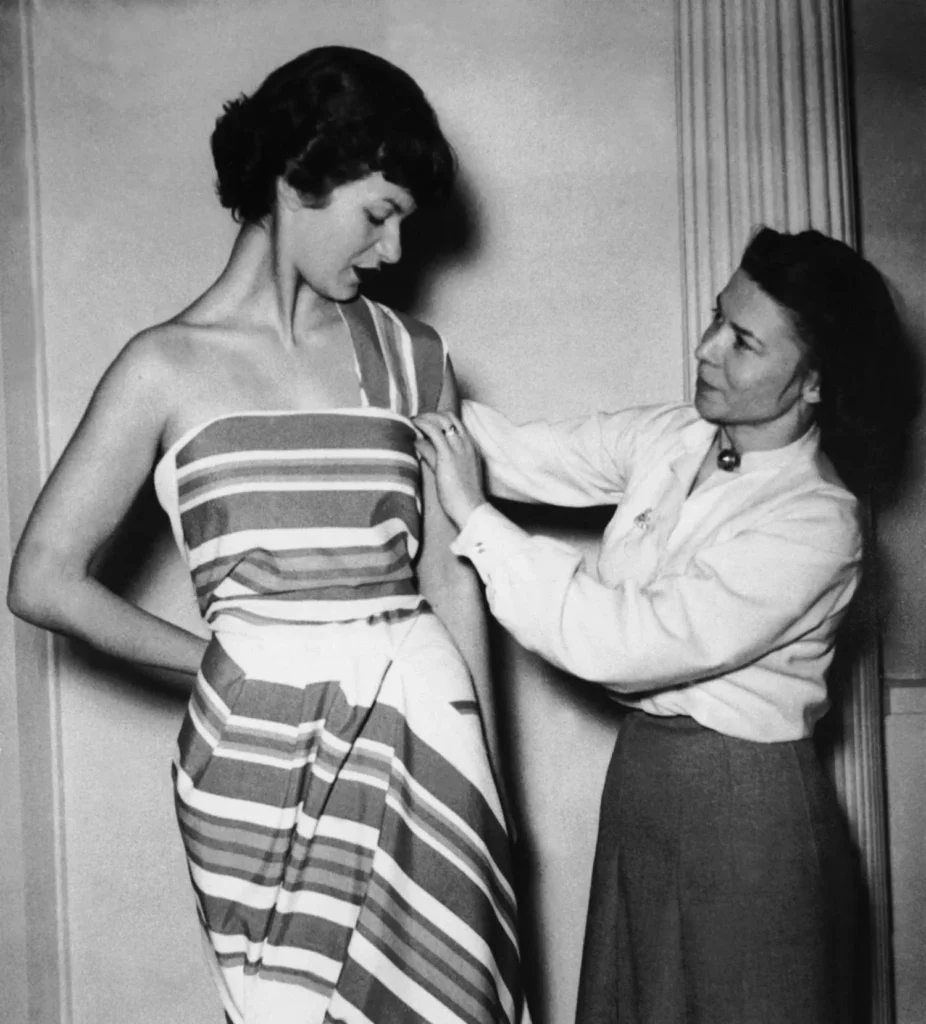
photo/glamour
The Beginnings of Carven Fashion House
In 1945, during the aftermath of World War II, Marie-Louise Carven opened her own fashion house. At the time, the world of haute couture was dominated by larger houses like Chanel and Dior. However, Carven wanted to create a brand that was not only elegant but practical for everyday women. She focused on creating clothing that combined sophistication with comfort, a revolutionary concept at the time.
Her first major breakthrough came when she introduced a smaller, more proportionate silhouette. Marie-Louise Carven’s designs were perfect for women who weren’t necessarily tall or thin but still wanted to embrace the elegance of haute couture. Her designs stood out for their youthful charm and practicality, setting her apart from her contemporaries.
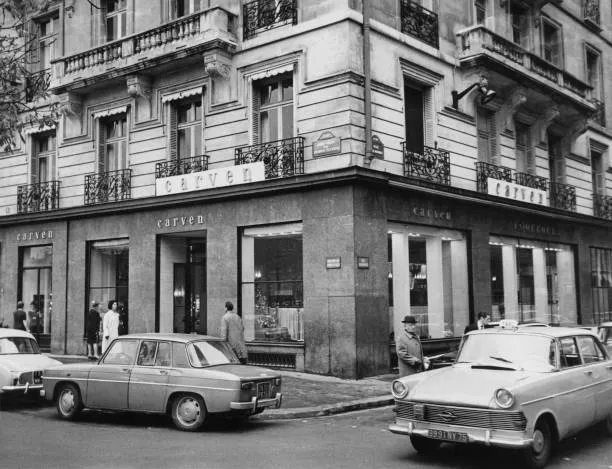
1965 Carven Fashion House photo/gettyimages
Notable Collection & Work
Marie-Louise Carven’s collections are often remembered for their sophistication and innovation. Some of her most notable works include the “Brocade” collection, which introduced rich fabrics and intricate designs that combined luxury with wearability. The “Bergère” collection from the 1950s also received widespread acclaim for its feminine appeal and flattering silhouettes.
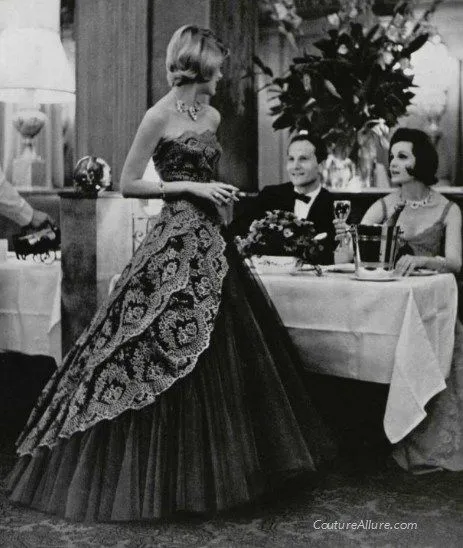
photo/coutureallure
Another standout collection was her 1960s line, which embraced the trends of the time while maintaining her signature elegance. She created shorter skirts and fresh, youthful designs that perfectly encapsulated the spirit of the swinging 60s.
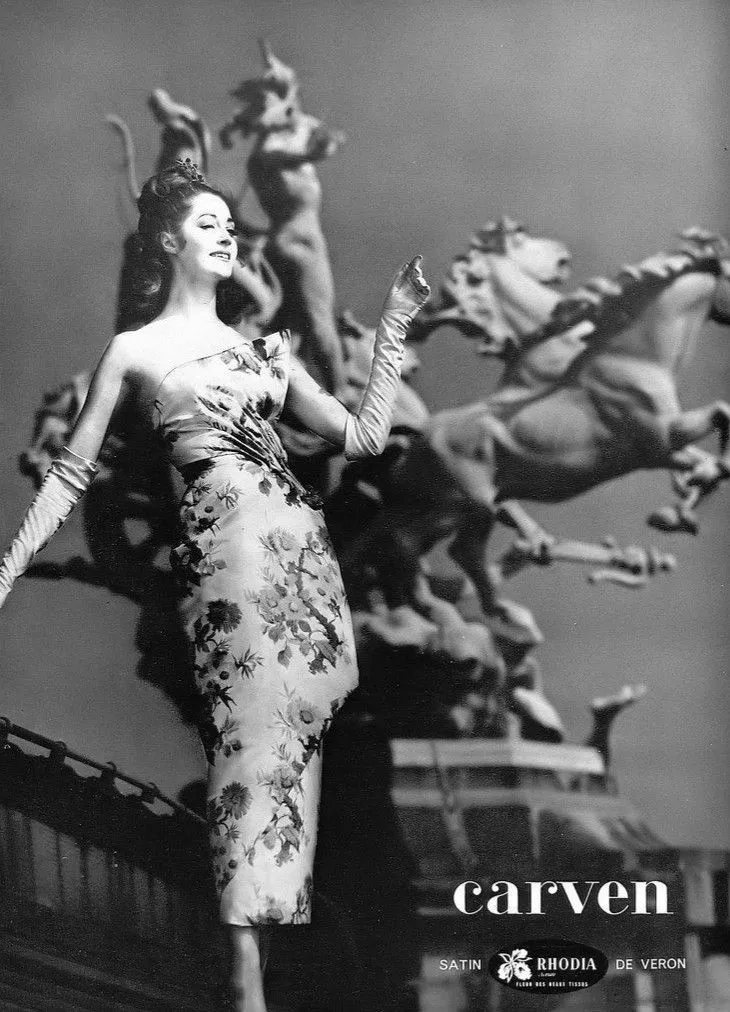
photo/pinterest
“La Griffe” Dress: One of her most iconic creations, the “La Griffe” dress was characterized by its clean lines, elegant drapery, and timeless femininity. This dress exemplified Marie-Louise Carven’s philosophy of combining simplicity with high fashion.
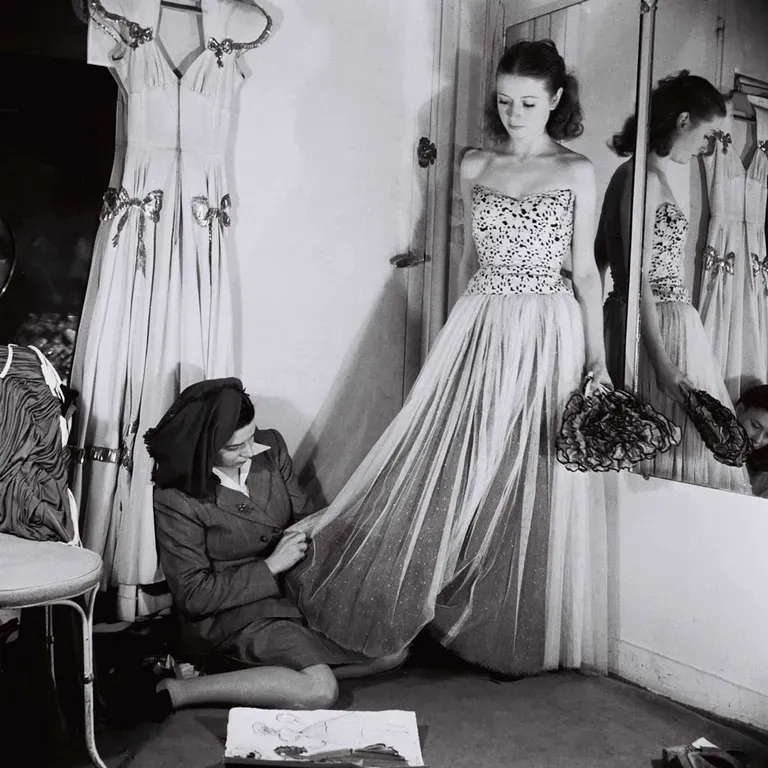
photo/marieclaire
Marie-Louise Carven’s collaborations with other artists, like her work with painter Jean Metzinger, also left a significant mark on the fashion world. These works were celebrated for their artistic vibrancy and their ability to blend fine art with fashion.
Carven’s Approach to Fashion Design
What set Carven apart was her keen ability to design clothes that were both elegant and comfortable. Unlike many of her peers, who focused on extravagant, unwearable styles, Marie-Louise Carven emphasized designs that women could wear every day. She incorporated soft lines and breathable fabrics into her collections, ensuring that each piece was not only stylish but also practical.
Her collections often featured dresses with nipped-in waists, A-line silhouettes, and flowing skirts, offering a sophisticated yet relaxed alternative to the rigid, formal styles of the era. Her creations celebrated femininity while offering ease of movement, a balance that few designers of her time could achieve.
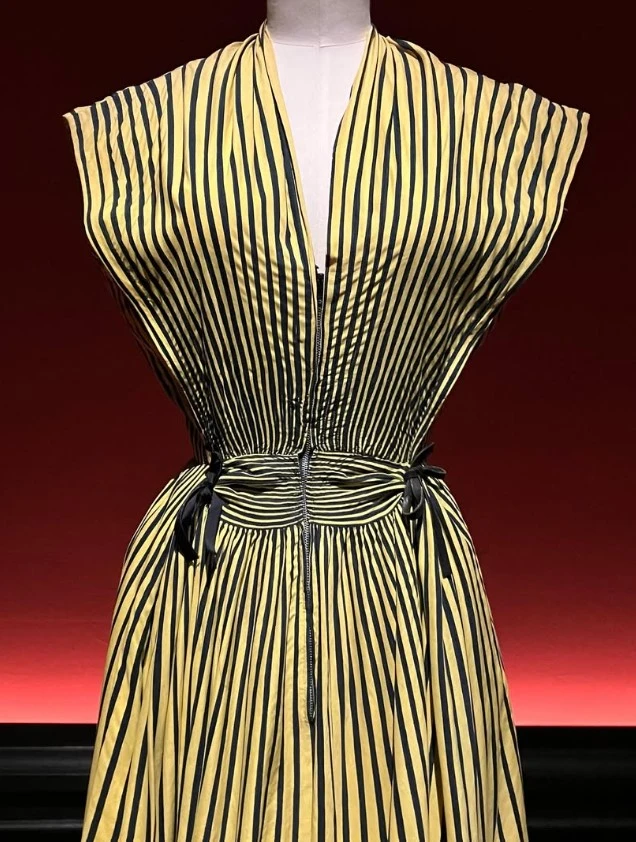
photo/thefashionableexhibit
Design Philosophy
Carven’s design philosophy was rooted in simplicity and wearability. Unlike other designers of her time who often emphasized dramatic and overly complicated pieces, Carven’s creations were timeless and practical. Her focus on comfort, fluidity, and ease of movement distinguished her from other haute couture designers.
She had an innate understanding of how women wanted to feel in their clothing. Carven believed that fashion should never be about rigid constraints but rather about freedom and fluidity. She also aimed to make her designs accessible, focusing on a wide range of body types and creating pieces that could be worn for various occasions.
Carven’s work was also deeply influenced by the post-war era, a time when women were looking for styles that symbolized optimism and liberation. She rejected the restrictive styles that had previously dominated fashion and instead embraced designs that allowed women to move, breathe, and express themselves freely.
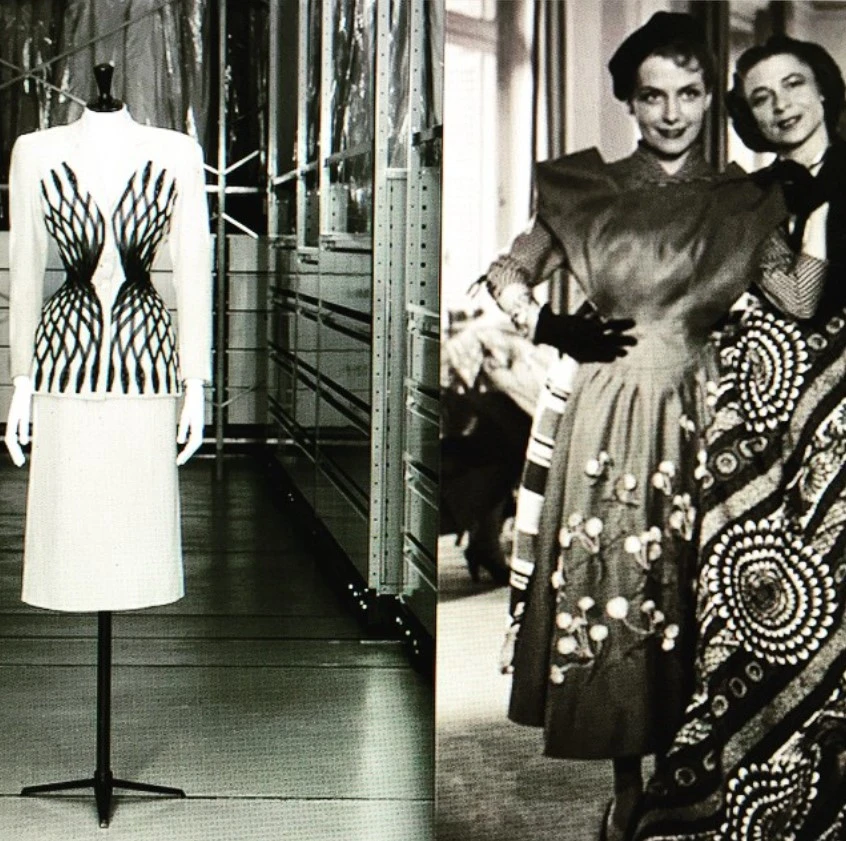
photo/joseforteza
Also Read-Christian Dior: The Man Who Changed the Fashion Forever
Her Impact on French Fashion
Carven’s contribution to French fashion is undeniable. She played an important role in the post-war fashion renaissance, a period marked by a desire for newness and creativity. As the fashion world slowly recovered from the war, Carven became part of the movement that reshaped Parisian fashion.
Her designs were aligned with the “New Look” that Christian Dior introduced in the late 1940s, but she took it further by making those styles more accessible and wearable. Carven’s work is credited with helping to democratize high fashion, making it more inclusive and adaptable to different body types.
Collaborations and Influences
Throughout her career, Carven collaborated with a range of artists and designers, creating a fusion of creativity that led to some iconic collections. She was known for drawing inspiration from a variety of sources, including the arts, her travels, and her personal experiences. Her collaboration with artists in the 1950s, particularly those in the decorative arts and illustration, helped define the Carven aesthetic.
Her relationships with other designers, including working alongside couturiers like Jean Patou, further expanded her influence. Carven’s artistic collaborations allowed her to experiment with textures, prints, and colors in ways that were innovative for her time.
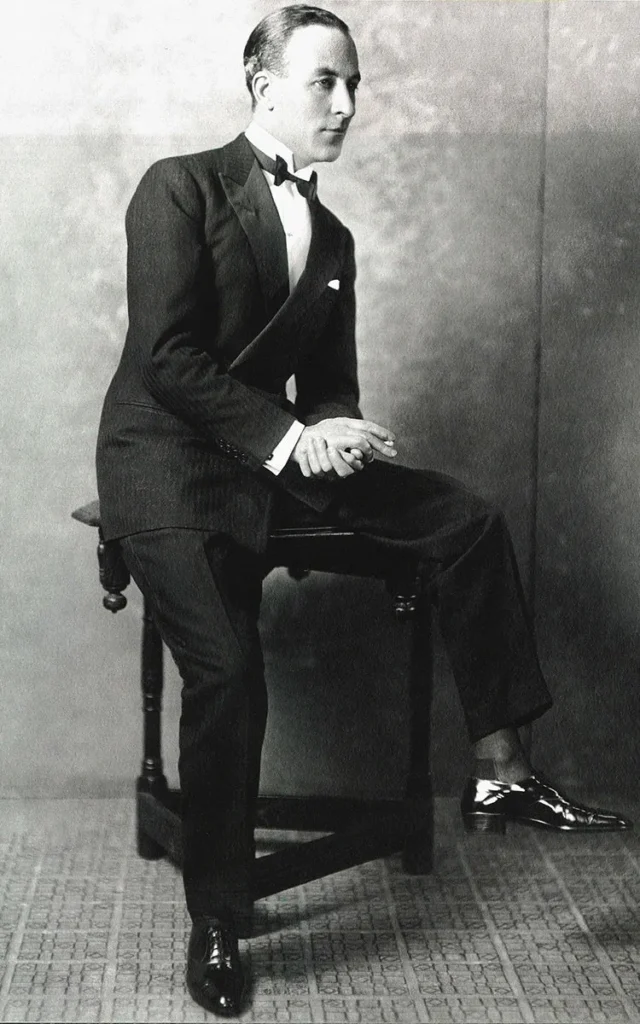
Jean Patou/ photo /patou
Carven’s Evolution Through the Decades
As the years went by, Carven’s style evolved with the times, although she remained true to her roots of practical elegance. In the 1960s, as fashion became more dynamic and experimental, Carven embraced more modern, youthful trends. She introduced shorter skirts and more daring cuts while still maintaining her classic feminine style.
The 1970s saw Carven continue to evolve, incorporating elements of the bohemian chic look that was so popular at the time. The brand remained relevant through the decades, adapting to the changing tastes of the global fashion scene.
Carven’s Approach to Marketing and Branding
Carven was one of the first designers to market her collections outside the traditional Paris fashion shows. She embraced modern marketing techniques, ensuring that her brand reached a broader audience. Through her clever use of advertisements, product placements, and collaborations, Carven became a name that was synonymous with elegance and innovation.
She understood the importance of a strong brand identity and worked tirelessly to cultivate a unique image for Carven, one that was sophisticated, fresh, and accessible.
Legacy and Influence on Modern Designers
Carven’s influence on contemporary designers is vast. Her emphasis on practicality and comfort paved the way for many modern designers who seek to create wearable yet fashionable pieces. Designers like Stella McCartney, Chloe, and Isabel Marant have all cited Carven as an influence, particularly in how she combined elegance with everyday wearability.
The Carven Brand Today
Today, Carven remains a respected name in fashion, although it has undergone changes in ownership and direction. The brand’s legacy continues through collections that embrace the same feminine, youthful spirit Carven was known for. Under new leadership, Carven has adapted to the modern fashion landscape while still honoring the values established by its founder.
The Enduring Appeal of Carven’s Designs
What makes Carven’s designs so timeless? It’s the combination of elegance, comfort, and a sense of practicality that appeals to women of all ages. Her designs never felt like a fleeting trend but rather an investment in lasting style. The world of fashion may change, but Carven’s influence remains a guiding force.
Carven’s Impact on Women’s Fashion
Carven’s work revolutionized the way women dressed. She helped to define modern femininity, moving away from the stiff, corseted designs of earlier eras and introducing a more natural and fluid approach. Her designs allowed women to feel confident, stylish, and comfortable all at once.
Marie-Louise Carven at a Glance
Table of Contents for Marie-Louise Carven’s Fashion Legacy
| Section | Details |
|---|---|
| Introduction | Marie-Louise Carven revolutionized fashion with her elegant yet wearable designs, leaving a lasting legacy in the fashion industry. |
| Early Life and Education | – Born in 1909, Paris, France, into a middle-class family. |
| – Studied at École de la Chambre Syndicale de la Couture Parisienne, building a foundation in practical yet sophisticated design. | |
| The Beginnings of Carven | – Founded her fashion house in 1945, post-WWII. |
| – Introduced smaller, proportionate silhouettes catering to women of varied body types. | |
| Notable Collection & Work | – Brocade Collection: Luxurious fabrics with intricate designs. |
| – Bergère Collection (1950s): Feminine and flattering silhouettes. | |
| – 1960s Line: Youthful, trendy designs with shorter skirts, capturing the spirit of the times. | |
| Design Philosophy | – Focused on simplicity, wearability, and freedom of movement. |
| – Rooted in post-war optimism, offering accessible fashion for women of all body types. | |
| Carven’s Signature Style | – Youthful, fresh approach with clean lines, pastel colors, and floral prints. |
| – Celebrated femininity without rigid constraints. | |
| Impact on French Fashion | – Contributed to post-war fashion renaissance. |
| – Helped democratize haute couture, making it accessible to wider audiences. | |
| Collaborations and Influences | – Worked with artists like Jean Metzinger. |
| – Drew inspiration from travel, art, and nature. | |
| Carven’s Evolution | – Adapted to trends of the 1960s (youthful, daring cuts) and 1970s (bohemian chic) while maintaining core elegance. |
| Marketing and Branding | – Pioneered modern marketing techniques, including advertisements and collaborations. |
| Legacy and Influence | – Inspired designers like Stella McCartney, Chloe, and Isabel Marant. |
| – Continues to influence modern fashion with its accessible and sophisticated style. | |
| The Carven Brand Today | – Still operational, producing collections true to the founder’s vision. |
Conclusion
Marie-Louise Carven was a trailblazer in the fashion world. Her ability to blend sophistication with practicality made her one of the most important designers of the 20th century. Today, her influence is still felt in the fashion world, with designers and brands continuing to draw inspiration from her work. Carven’s legacy is one of elegance, innovation, and an enduring commitment to making fashion accessible to all women.
FAQs
1. What was Marie-Louise Carven’s signature style?
Carven’s signature style focused on youthful, feminine elegance. She was known for her use of simple, clean lines, light fabrics, and flattering silhouettes that were both stylish and comfortable.
2. How did Carven impact the fashion industry?
Carven revolutionized fashion by making haute couture accessible and wearable. She democratized French fashion by designing pieces that celebrated the beauty of all body types.
3. Is the Carven brand still in operation today?
Yes, although the brand has undergone ownership changes, Carven continues to produce collections that stay true to its founder’s vision of elegant, practical, and sophisticated designs.
4. What are some of Carven’s most iconic collections?
Her “Brocade” collection and “Bergère” collection are some of the most iconic. These collections exemplified her ability to blend luxury with wearability.
5. How did Carven influence modern designers?
Carven’s focus on comfort and practicality has influenced designers like Stella McCartney and Chloe, who incorporate these principles into their collections today.
One thought on “Marie-Louise Carven: Where Classic Meets Creative Brilliance”